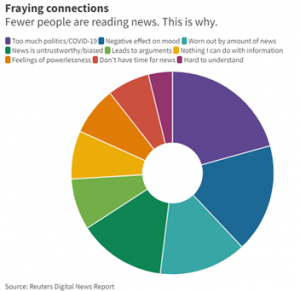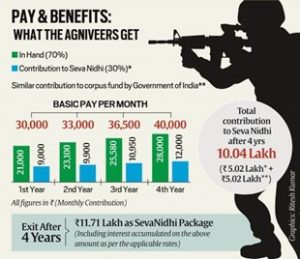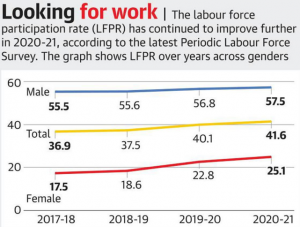Table of Contents
THE INTERNATIONAL RELATIONS
CABINET APPROVES MEMORANDUM OF ASSOCIATION (MOA) BY INDIA FOR ESTABLISHMENT OF BIMSTEC TECHNOLOGY TRANSFER CENTRE AT COLOMBO, SRI LANKA
THE CONTEXT: The Union Cabinet chaired by the Prime Minister has approved a Memorandum of Association (MoA) by India for the establishment of the Bay of Bengal Initiative for Multi-Sectoral Technical and Economic Cooperation (BIMSTEC) Technology Transfer Facility (TTF) was signed by the BIMSTEC member countries at the 5th BIMSTEC Summit held at Colombo, Sri Lanka on 30th March 2022.
THE EXPLANATION:

- The main objectives of the BIMSTEC TTF are to coordinate, facilitate and strengthen cooperation in technology transfer among the BIMSTEC
Member States by promoting the transfer of technologies, sharing of experiences and capacity building.
- The TTF shall facilitate transfer of technologies among the BIMSTEC Member States, amongst other things, in the following priority areas Biotechnology, Nanotechnology, Information and Communication Technology, Space technology applications, Agricultural technology, Food processing technology, Pharmaceutical technology automation, New and renewable energy technology automation, New and Renewable energy technology, Oceanography, Nuclear Technology Applications, E-waste and solid waste management technology, Health Technologies, Technologies pertinent to Disaster Risk Reduction and Climate Change Adaptation.
The TTF shall have a Governing Board and the overall control of activities of the TTF shall be vested in the Governing Board. The Governing Board s
hall consist of one nominee from each Member State.
The expected outcomes of the BIMSTEC TTF are:
- Databank of technologies available in BIMSTEC Countries,
- Repository of information on good practices in the areas of technology transfer management, standards, accreditation, metrology, testing and calibration facilities,
- Capacity building, sharing of experiences and good practices in development, and
- Transfer and use of technologies among BIMSTEC countries.
THE SOCIAL JUSTICE AND SOCIAL ISSUES
‘MIGRATION IN INDIA 2020-21
THE CONTEXT: According to the report, ‘Migration in India 2020-21’, released by the Ministry of Statistics and Programme Implementation (MoSPI), stated that, After the onset of the Covid-19 pandemic in March 2020, 0.7 per cent of the country’s population was a ‘temporary visitor’ in households during July 2020-June 2021.
THE EXPLANATION:
The findings of the report showed that a total of 48.9 per cent of the ‘temporary visitors’ moved to meet family/relatives/friends during July 2020-June 2021, while 15.7 per cent of such temporary visitors moved for health-related reasons and 12.2 per cent moved for loss of job/closure of unit/lack of employment opportunities.
| Who are Temporary Visitors?
The ‘temporary visitors’ have been defined as the ones who arrived in households after March 2020 and stayed continuously for a period of 15 days or mor |
- “That 0.7 per cent is male, and female combined at the all-India level and that percentage is in reference to the country’s population. 0.7 per cent o
- f the country’s population moved during July-June 2020-21 as temporary visitors in the households.
- If the absolute number has to be estimated, it has to be multiplied with the country’s population. The survey block was introduced in July 2
020 and the period of survey for asking this information was July 2020-June 2021. crore (Census 2011), 0.7 per cent would imply to be about 85 lakh ‘te
e but less than 6 months, ‘migrants’ have been defined as those, for whom the last usual place of residence, any time in the past, is different from the present place of enumeration.
mporary visitors’ in the households.
- The all-India migration rate was 28.9 per cent in July-June 2020-21, with 26.5 per cent migration rate in rural areas and 34.9 per cent in urban areas. Females recorded a higher share of migration rate of 47.9 per cent, with 48 per cent in rural areas and 47.8 per cent in urban areas. The migration rate for males was seen at 10.7 per cent, with 5.9 per cent in rural areas and 22.5 per cent in urban areas.
REUTERS INSTITUTE DIGITAL NEWS REPORT 2022
THE CONTEXT: According to the 2022 Reuters Institute Digital News Report, trust in news is falling in nearly half the countries surveyed, with significant proportions of the public, especially younger age groups, beginning to turn away from news. Further, news consumption is increasingly happening via social media platforms such as TikTok rather than traditional media.
THE EXPLANATION:
What is the scope of this report?
- This study, an annual one commissioned by the Reuters Institute for the Study of Journalism, tracks how news is consumed in different countries.
- This year’s report, the eleventh overall, is based on a survey conducted by YouGuv, a British market research and data analytics firm, in January/February 2022 through online questionnaires.
- It covers 46 markets in six continents. Since it is based on online questionnaires, the findings are not necessarily nationally representative, especially for countries with lower internet penetration. For India, the data is more representative of younger English speakers and not the national population as such.
What are the major trends highlighted in the report?
- Broadly, the report documents the ways in which “the connection between journalism and much of the public may be fraying”. It flags six major trends which could have wider socio-political implications.
- Firstly, people are trusting news content less and less.
- Second, consumption of traditional news media declined in nearly all the countries surveyed.
- Third, the proportion of news consumers who say that they “avoid news” has risen sharply across countries, with the report describing the phenomenon as “selective avoidance”.
- Fourth, despite small increases in the proportion of people willing to pay for online news (mostly in richer countries), the growth in digital subscriptions for news content seems to be leveling off.
- Next, “the smartphone has become the dominant way in which most people first access news in the morning”.
- Finally, the report notes that while Facebook remained the most-used social network for news, it is TikTok that has become the fastest-growing network, “reaching 40% of 18-24-year-olds, with 15% using the platform for news”. TikTok, however, is currently banned in India.

What does the report say about trends in India?
In the section on India, produced in collaboration with the Asian College of Journalism, the report, observing that “India is a strongly mobile-focussed market,” says that 72% of the survey respondents accessed news through smartphones and 35% did so via computers. Also, 84% of the Indian respondents sourced news online, 63% from social media, 59% from television, and 49% from print. YouTube (53%) and WhatsApp (51%) were the top social media platforms for sourcing news.
India registered a small increase in the level of trust, with 41% trusting news overall. While legacy print brands and public broadcasters continued to have high trust levels, only a minority — 36% and 35% — felt that the media was free from undue political influence and from undue business influence respectively.
- The 2022 Reuters Institute Digital News Report finds that trust in news is falling in nearly half the countries surveyed, with significant proportions of the public, especially younger age groups, beginning to turn away from news
- The average level of trust in news, at 42%, was found to be lower than the previous year
- India registered a small increase in the level of trust, with 41% trusting news overall. YouTube (53%) and WhatsApp (51%) were the top social media platforms for sourcing news.
PERIODIC LABOUR FORCE SURVEY (PLFS) 2020-21
THE CONTEXT: According to the Periodic Labour Force Survey (PLFS) for 2020-21 released by the Ministry of Statistics and Programme Implementation, the unemployment rate saw a decrease of 0.6% and fell to 4.2% in 2020-21, compared with 4.8% in 2019-20.
THE EXPLANATION:
-
- This means that only 2% of adults who looked for jobs could not get any work in rural and urban areas of the country in 2020-21. Rural areas recorded an unemployment rate of 3.3% and urban areas recorded an unemployment rate of 6.7%.
- The National Statistical Office (NSO) uses a “rotational panel sampling design” in urban areas to assess the Labour Force Participation Rate (LFPR), Worker Population Ratio (WPR) and the unemployment rate, and visits to selected households in urban areas four times. There was, however, no revisit for the rural samples.

The sample size for the first visit during July 2020-June 2021 in rural and urban areas was 12,800 first-stage sampling units (FSU) in 7,024 villages and 5,776 urban frame survey blocks.
First-stage sampling
- Out of this, 12,562 FSUs (6,930 villages and 5,632 urban blocks) were surveyed for canvassing the PLFS schedule.
- “The number of households surveyed was 1,00,344 (55,389 in rural areas and 44,955 in urban areas) and number of persons surveyed was 4,10,818 (2,36,279 in rural areas and 1,74,539 in urban areas),” the Ministry said in a release.
- The LFPR, the percentage of persons in the labour force (that is, working or seeking work or available for work) in the population, was 41.6% during 2020-21. It was 40.1% in the previous year. The WPR was 39.8%, an increase from 38.2% of the previous year. The WPR is defined as the percentage of employed persons in the population.
- Migrants are defined in the survey as a household member whose last usual place of residence, at any time in the past, was different from the present place of enumeration. The migration rate, according to the survey, is 28.9%. The migration rate among women was 48% and 47.8% in rural and urban areas, respectively.
Rural jobs
- Experts point out that a second visit to the households in rural areas could have provided a bigger and larger picture of unemployment, which did not happen in the survey.
- “Overall, the report suggests shifting the government’s policy directions as it has become more rural-centric. Creation of rural jobs other than in the agricultural sector and MGNREGA (Mahatma Gandhi National Rural Employment Guarantee Act) could be priorities for the government at the Union and State levels
THE GOVERNMENT SCHEMES AND INITIATIVES IN THE NEWS
EXPLAINED: THE AGNIPATH SCHEME FOR RECRUITING SOLDIERS
THE CONTEXT: The government unveiled its new Agnipath scheme for recruiting soldiers across the three services. The new defence recruitment reform, which has been cleared by the Cabinet Committee on Security, will come into effect immediately, and the soldiers recruited under the scheme will be called Agniveers.
THE EXPLANATION:
What is the Agnipath scheme?
Under the new scheme, around 45,000 to 50,000 soldiers will be recruited annually, and most will leave the service in just four yea

rs. Of the total annual recruits, only 25 per cent will be allowed to continue for another 15 years under permanent commission. The move will make the permanent force levels much leaner for the over 13-lakh strong armed forces in the country.
This will, in turn, considerably reduce the defence pension bill, which has been a major concern for governments for many years.
What is the eligibility criteria?
- The new system is only for personnel below officer ranks (those who do not join the forces as commissioned officers).
- Under the Agnipath scheme, aspirants between the ages of 17.5 years and 21 years will be eligible to apply. The recruitment standards will remain the same, and recruitment will be done twice a year through rallies.
What happens after selection?
- Once selected, the aspirants will undergo training for six months and then be deployed for three and a half years.
- During this period, they will get a starting salary of Rs 30,000, along with additional benefits which will go up to Rs 40,000 by the end of the four-year service.
THE NEWS IN NUMBERS
PALM OIL IMPORTS
According to the industry body Solvent Extractors Association (SEA), 33 per cent by which India’s palm oil imports dipped during May 2022 The share of palm oil is about 50% of the country’s total vegetable oil imports. India’s total vegetable oil imports declined to 10,05,547 tonnes in May this year, compared to 12,13,142 tonnes in the year-ago period. Among soft oils, the import of soyabean oil increased sharply to 3.73 lakh tonnes in May this year, as against 2.67 lakh tonnes in the same period of the previous year.
POLLUTION TOLL
According to the University of Chicago’s (EPIC) Air Quality Life Index (AQLI), 5 years in life expectancy an average Indian stand to lose if the World Health Organization (WHO) guidelines are not followed, “Of all the countries in the world, India faces the highest health burden of air pollution due to its high particulate pollution concentrations and large population”. The Indian population of about 130 crore people live in areas where the annual average particulate pollution level exceeds the WHO guidelines.
RECORD HIGH-WPI
The 15.88 per cent by which India’s wholesale price-based inflation rose in May 2022 on the back of rising prices of food items and crude oil. The Wholesale Price Index-based (WPI) inflation was 15.08% in April and 13.11% in May last year. The WPI inflation has remained in double digits for the 14th consecutive month since April 2021. Inflation of food items in May was 12.34%, as prices of vegetables, wheat and fruits witnessed a sharp spike over the year-ago period.
THE PRELIMS PRACTICE QUESTIONS
QUESTION FOR 15TH JUNE 2022
Q1. Consider the following statements about BIMSTEC countries:
- It is founded in 1997 by Bangkok Declaration.
- Its permanent secretariat is in Colombo.
Which of the following statements is/are incorrect?
a) 1 only
b) 2 only
c) Both 1 and 2
d) Neither 1 nor 2
ANSWER FOR 14TH JUNE 2022
Answer: B
Explanation:
- It is central to Maharashtra only.
- Sant Tukaram’s message about a casteless society and his denial of rituals had led to a social movement
Spread the Word



